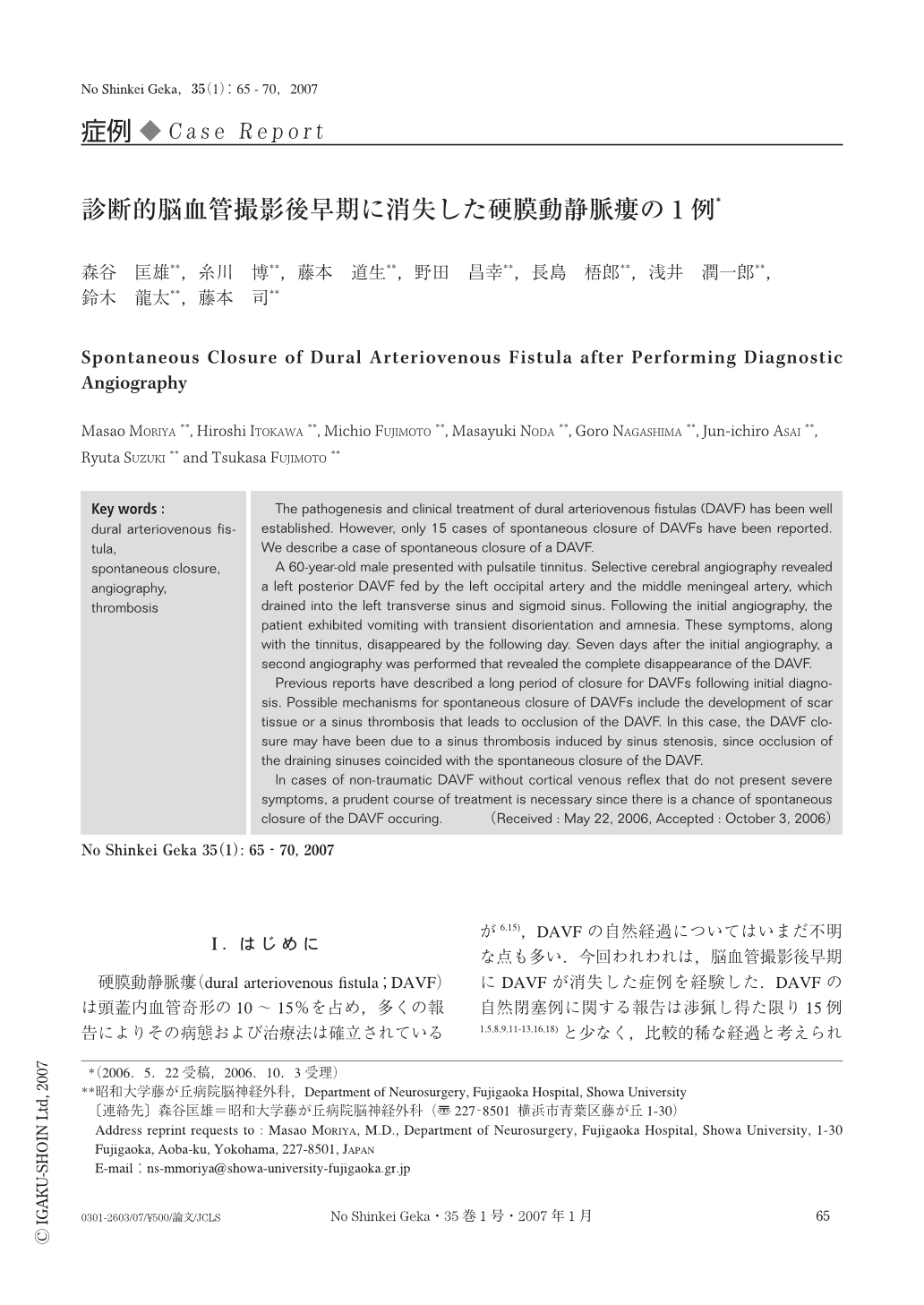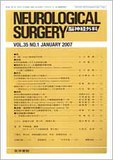Japanese
English
- 有料閲覧
- Abstract 文献概要
- 1ページ目 Look Inside
- 参考文献 Reference
Ⅰ.はじめに
硬膜動静脈瘻(dural arteriovenous fistula;DAVF)は頭蓋内血管奇形の10~15%を占め,多くの報告によりその病態および治療法は確立されているが6,15),DAVF の自然経過についてはいまだ不明な点も多い.今回われわれは,脳血管撮影後早期に DAVF が消失した症例を経験した.DAVF の自然閉塞例に関する報告は渉猟し得た限り15例1,5,8,9,11-13,16,18)と少なく,比較的稀な経過と考えられたので文献的考察を加え報告する.
The pathogenesis and clinical treatment of dural arteriovenous fistulas (DAVF) has been well established. However, only 15 cases of spontaneous closure of DAVFs have been reported. We describe a case of spontaneous closure of a DAVF.
A 60-year-old male presented with pulsatile tinnitus. Selective cerebral angiography revealed a left posterior DAVF fed by the left occipital artery and the middle meningeal artery, which drained into the left transverse sinus and sigmoid sinus. Following the initial angiography, the patient exhibited vomiting with transient disorientation and amnesia. These symptoms, along with the tinnitus, disappeared by the following day. Seven days after the initial angiography, a second angiography was performed that revealed the complete disappearance of the DAVF.
Previous reports have described a long period of closure for DAVFs following initial diagnosis. Possible mechanisms for spontaneous closure of DAVFs include the development of scar tissue or a sinus thrombosis that leads to occlusion of the DAVF. In this case, the DAVF closure may have been due to a sinus thrombosis induced by sinus stenosis, since occlusion of the draining sinuses coincided with the spontaneous closure of the DAVF.
In cases of non-traumatic DAVF without cortical venous reflex that do not present severe symptoms, a prudent course of treatment is necessary since there is a chance of spontaneous closure of the DAVF occuring.

Copyright © 2007, Igaku-Shoin Ltd. All rights reserved.


